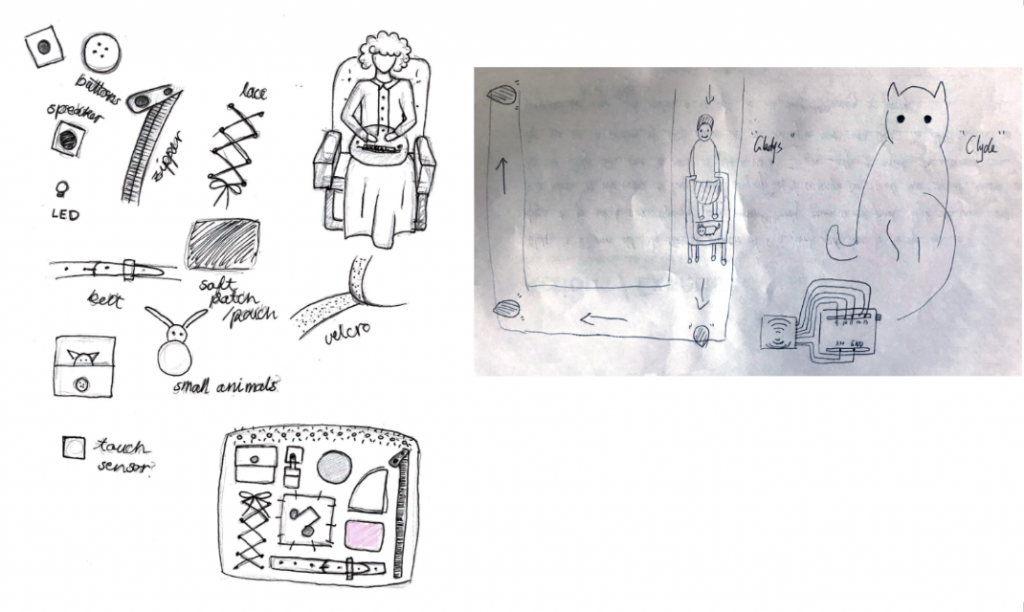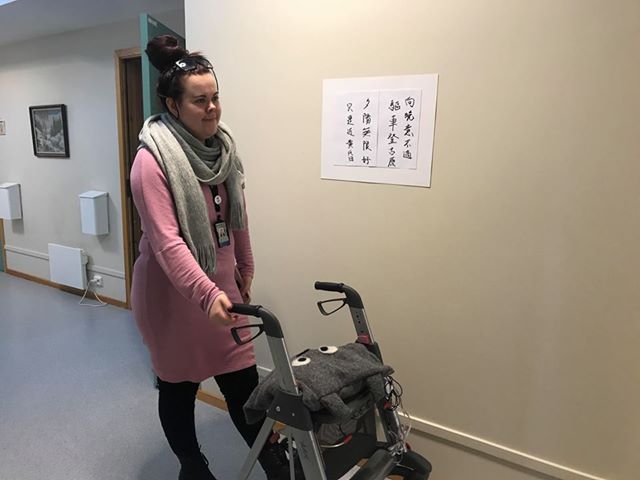In this project, we were tasked to design and create a prototype for an innovative product/service to inspire elderly persons with dementia to move.
The product should also work as a platform to unite grandchildren with the elderly, and build on a health promoting, user and resource-centered way of thinking.
1. Goals:
- An increased/higher amount of physical and mental activity for the residents.
- Create a feeling of nostalgia.
- Create a feeling of mastery.
- Possibly put some load off of the nurses.
- High levels of universal design – a product that can be used by all residents, regardless of their physical form. The product should not put too much cognitive or physical load on the user.
- User-centered design – a high focus on the user and usability, making sure we fulfil the users’ needs and requirements.
2. Methods:
- Research
- Research on dementia.
- User interviews.
- Ideation
- Brainstorming, ideation and sketching – come up with as many concepts/ideas as possible. Various workshop/gamestorming methods.
- Concept selection: Prepare and present concept presentations. Staff at Bjørkelia are to select one concept.
- Further concept definition.
- Plan configuration, technical drawings etc. Figure out what materials are needed – acquire materials.
- Prototyping
- Test/presentation
3. Findings:
During our interviews, we gathered a lot of information regarding the residents’ daily lives, interests, activities etc. Due to their condition and age, they are not able to perform all of the activities listed under anymore, but we still view this as valuable user insight.
3.1 Inspirational Actions:
- Singing
- Knitting
- Watching television
- Baking
- Fishing
- Hiking / walks
- Reading
- Playing cards
- Manicures
- Listening to music (especially music from the 50s and 60s. Such as Alf Prøysen, Elvis etc.)
- Tours with Skibladner
3.2 User Contexts:
- Hallway
- Common area/kitchen
- Garden/outside area (during the summer)
- Private apartment room
3.3 Users:
- Residents
- Staff
- Grandchildren
- Family
- Friends
4. Concept:
Our final concept consists of a combination of two of our previous ideas, that the staff suggested we should merge into one:
- An interactive activity pillow with different items to fiddle with.
- An interactive kind of game in the hallway, where the goal is to take care of a robotic cat, and make it happy by taking it through different stations.
Combined, we ended up with the following concept:
Activity pillow + corridor interactive system
- Residents bring pillows to stations in the hallway.
- Different stations have different themes.
- When the pillow is within a certain distance of a station, it will be triggered and different music related to the artwork will be played from the pad.

5 Prototypes:
We made several different pillows to demonstrate our concept. The reason that we made more than one was due to discussions regarding the concept, wanting to try different things, but also due to last-minute changes. In an ideal product, the different pillows would have been combined into one.
The pillows are made up by soft fabric. Pillow 1 is covered in various items, such as pockets, buttons, pompoms, zippers and LEDs. If user gets bored, he/she can simply place the pillow on their lap, and fiddle with the various items on it. This pillow also includes a strap that the user can attach around his/her body. This is convenient for those who do not use a walker, but do not want to hold on to the pillow at all times. The strap can be hidden inside a compartment when it is not in use.
The LEDs are activated by pushing a pressure sensor. The sensor is marked by a heart on the pillow, so that the user will know where to push. The pressure sensor and the LEDs are connected to an Arduino inside the pillow, which is powered by a battery.


